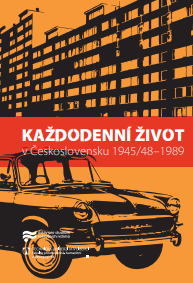Životní styl a každodennost v Československu v padesátých a šedesátých letech 20. století
Lifestyle and everyday life in the Czechoslovakia during the 1950s and 1960s
Author(s): Martin Franc
Subject(s): Cultural history, Political history, Social history, WW II and following years (1940 - 1949), Post-War period (1950 - 1989), History of Communism
Published by: Ústav pro studium totalitních režimů
Keywords: Czechoslovakia; 20th century; 50s; 60s; everyday life; communism; culture; Soviet Union;
Summary/Abstract: This study contemplates basic factors of the style of life in Czechoslovakia during the 1950s and the 1960s with focus on the generation gap and opinions of young people. It attempts to analyze historical progress in that area and show phenomena typical for each period. For the 1940s and the beginning of the 1950s it is the general pursuit of collectivity. Really strong collectivist pressures attacked the foundations of the individuality only during a relatively short period and addressed only specific groups in the society, especially amongst young people, who are susceptible to it in general under other circumstances. Beyond the collectivism the Sovietisation and the ostentatious acceptance of Soviet practices and inspirations were another distinct and represented phenomenon. The Sovietisation, in spite of its obtrusiveness and omnipresence, did not make an essential mark on the everyday life. The extensive adoration of the manual labour and the working class is also often mentioned when talking about the everyday life of the beginning of the 1950s as well as general application of the class principles to the everyday life of the people and resulting decline from previous social order. Basically there was a struggle between two leading lifestyle philosophies at the beginning of the fifties. While the first one made an effort to establish genuine culture of the proletariat, the second one tried to adopt the lifestyle of the existing middle class. Since the half of the 1950s the second conception established itself distinctively. The “Khrushchevism” of the second half of the 1950s attempted to harmonize the divergence between ideology and products of the modern civilization that often came from the officially hated western countries. The range of food and consumer goods was widened more attention was paid to their aesthetic values as well. Renewed were also the attempts to create “a new socialist individual” and also the image of the socialist lifestyle as full-fledged alternative to the western consumer society (at least on the theoretical level). The economic depression and resulting shortages at the beginning of the 1960s dispersed any naive ideas about the life in socialism and early transition into the communist society. But it was not only the depression influencing the lifestyle, but also the coming of age of the post-war population boomers, which resulted in evolution of the popular art culture. Czech and Slovak youths discomforted party ideologists with their distaste for involvement in politics and inclination to some features of the western consumer society. The depression forced opening of the country to the western tourists and the build-up of the related infrastructure. And the foreign impulses and following changes like shift to more or less western type consumer society became the basic factors of the sixties’ lifestyle. It is of course necessary to mention that it was very often only a game imitating elements of the western consumer society. This build-up of the virtual bubble culminated in 1968 was numbed by the normalization for only a certain time and in some aspects.
Book: Každodenní život v Československu 1945/48-1989
- Page Range: 18-32
- Page Count: 15
- Publication Year: 2015
- Language: Czech
- Content File-PDF

